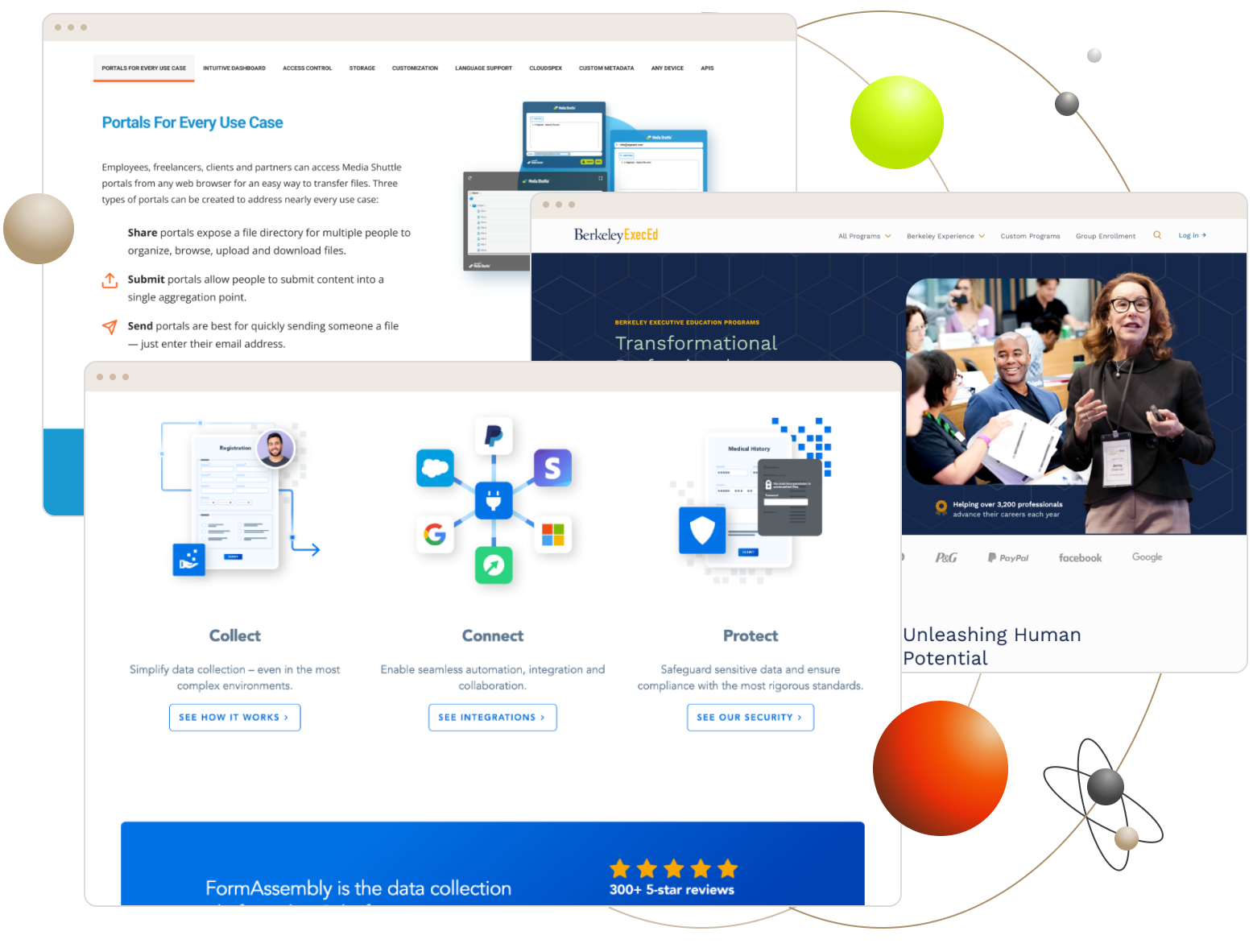
In today’s fast-paced marketing landscape, staying ahead of the curve requires agility and consistency. This is where design systems come in. Design Systems act as a central hub, a single source of truth, for all things related to your brand’s visual identity on the web. By establishing a design system specifically for marketing websites, you can achieve brand coherence, streamline workflows, and ultimately, boost marketing effectiveness.
What is a Design System for B2B Websites?
Think of a design system as a comprehensive toolkit for building websites. It goes beyond simply storing logos and color palettes. A well-crafted design system encompasses the following key elements:
- Brand Guidelines: This defines the core principles of your brand identity, including voice, tone, and overall visual style. It ensures messaging and design choices resonate with your target audience.
- Design Principles: These are the fundamental design rules that govern layout, spacing, hierarchy, and user interface (UI) elements. They create a sense of visual order and guide the user experience (UX) across all web pages.
- Typography: The system specifies the fonts, weights, and sizes to be used for headings, body text, and calls to action (CTAs). Consistent typography enhances readability and establishes a professional look.
- Color Palette: A defined set of colors ensures a cohesive visual language across the website. The system should also explain how and when to use each color for optimal impact.
- Reusable Components: Pre-built UI components like buttons, forms, navigation bars, and content blocks streamline the design and development process. Marketers can easily drag-and- drop components to build new website sections without reinventing the wheel.
- Accessibility Guidelines: The system should address accessibility considerations, ensuring your marketing website is usable for everyone, regardless of ability.
- Content Style Guide: This establishes guidelines for writing clear, concise, and engaging marketing copy. A consistent voice across the website strengthens brand recognition and builds trust with your audience.
Benefits of Design Systems for Marketing Websites
The advantages of implementing a design system for your marketing websites are numerous:
- Brand Consistency: A design system ensures all marketing websites, landing pages, and campaign materials maintain a unified visual identity. This strengthens brand recognition and builds trust with your audience.
- Increased Efficiency: Pre-built components and clear guidelines save designers and developers significant time and effort. They can focus on creative problem-solving rather than repetitive tasks. Additionally, marketing teams can quickly build and update website sections without relying on design or development resources.
- Scalability and Agility: Design systems allow you to adapt your marketing website to new campaigns and initiatives seamlessly. With a set of established components and guidelines, you can easily expand your website while maintaining brand consistency.
- Reduced Costs: By eliminating the need to recreate design elements from scratch, design systems lead to cost savings in the long run.
- Improved Collaboration: A well-documented design system fosters better communication and collaboration between design, development, and marketing teams. Everyone is working from the same set of guidelines, ensuring a smoother workflow.
- Reduced Design Debt: “Design debt” refers to inconsistencies that accumulate over time when design guidelines aren’t followed. A design system helps prevent design debt by providing a centralized source of truth for all design decisions.
Unleash Your Marketing Potential with Atlantic
Atlantic is an all-in-one marketing platform designed to empower your teams. It offers the perfect blend of features to streamline your workflow and maximize marketing performance:
- Marketing Performance Dashboard: Gain real-time insights into your marketing efforts with clear, actionable data.
- Ironclad Security: Rest assured knowing your data is protected with robust security measures.
- Effortless Analytics: Dive into clean, easy-to-understand analytics to make data-driven marketing decisions.
- Complete Content Control: Enjoy total freedom to create, manage, and publish your marketing content.
- Seamless Responsiveness: Atlantic ensures your website looks stunning and functions flawlessly across all devices, desktops to mobile phones.
- Open-Source Integration: Atlantic seamlessly integrates with the open-source tools you already use, eliminating the need to overhaul your existing martech stack.
- Subscription-Based Flexibility: Benefit from a cost-effective subscription model that scales with your needs.
- Performance Optimization Tools: Take your marketing campaigns to the next level with built-in features designed to optimize performance and drive results.
Building and maintaining a robust design system for marketing websites empowers your team to create high-quality, brand-consistent experiences with greater efficiency. By establishing clear guidelines and reusable components, you streamline workflows, reduce errors, and free up valuable resources for strategic marketing initiatives.
However, navigating the initial setup and ongoing management of a design system can be a challenge. This is where ECC steps in. Our team of experts can guide you through the intricacies of building a highly performant, easy-to-use website that drives results.
Don’t let the complexities of managing a design system hinder your marketing potential. Contact us today for a free consultation and discover how our platform can empower your team to build and leverage a website that drives brand consistency, efficiency, and ultimately, marketing success.
